
The Glaive RGB was a decent gaming mouse in its own right, and Corsair is introducing a few key upgrades with the 2019 "Pro" refresh. The Glaive RGB Pro picks up a new 18,000 DPI optical sensor along with better ergonomics, improved textures on the side grips, and more customizable RGB lighting.
Corsair also added a DPI RGB LED indicator and lowered the weight of the mouse by 10 percent to 115g. Combine all that with the fact that you can change out the side grips to suit your needs, and you get one of the best gaming mice available today. I've been using the Glaive RGB Pro for three months, and here's how it has held up.
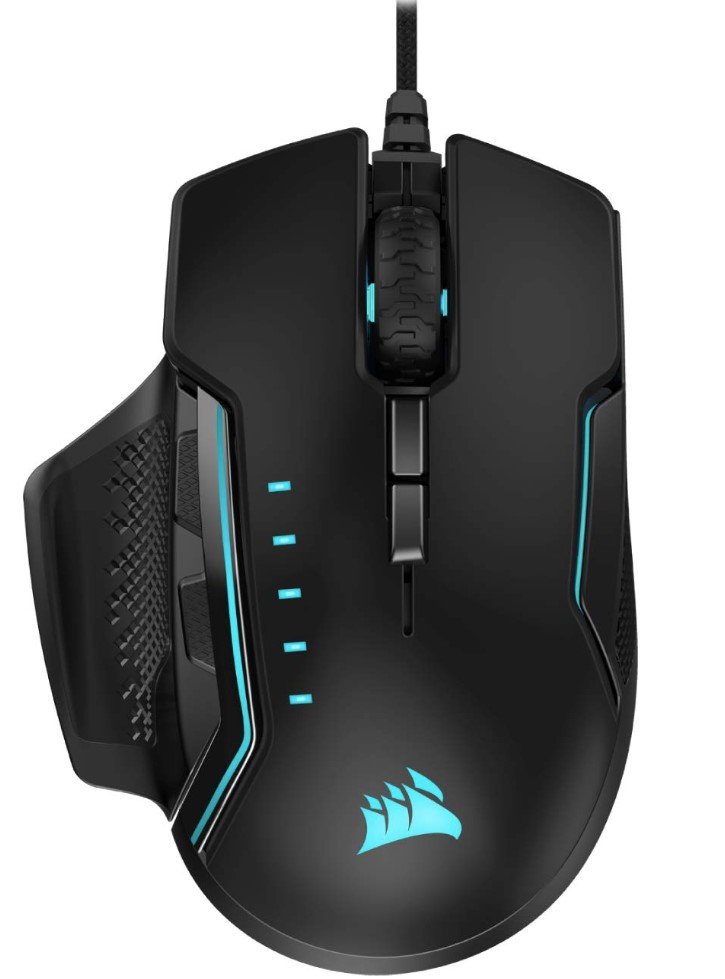
$70 at AmazonBottom line: One of the best sensors around in a design that's comfortable for extended gaming sessions.
Pros
- Excellent performance
- Comfortable
- Customizable grips
- Three-zone RGB lighting
Cons
- Non-intuitive software
- DPI LEDs cannot be switched off
What you'll like about the Corsair Glaive RGB Pro
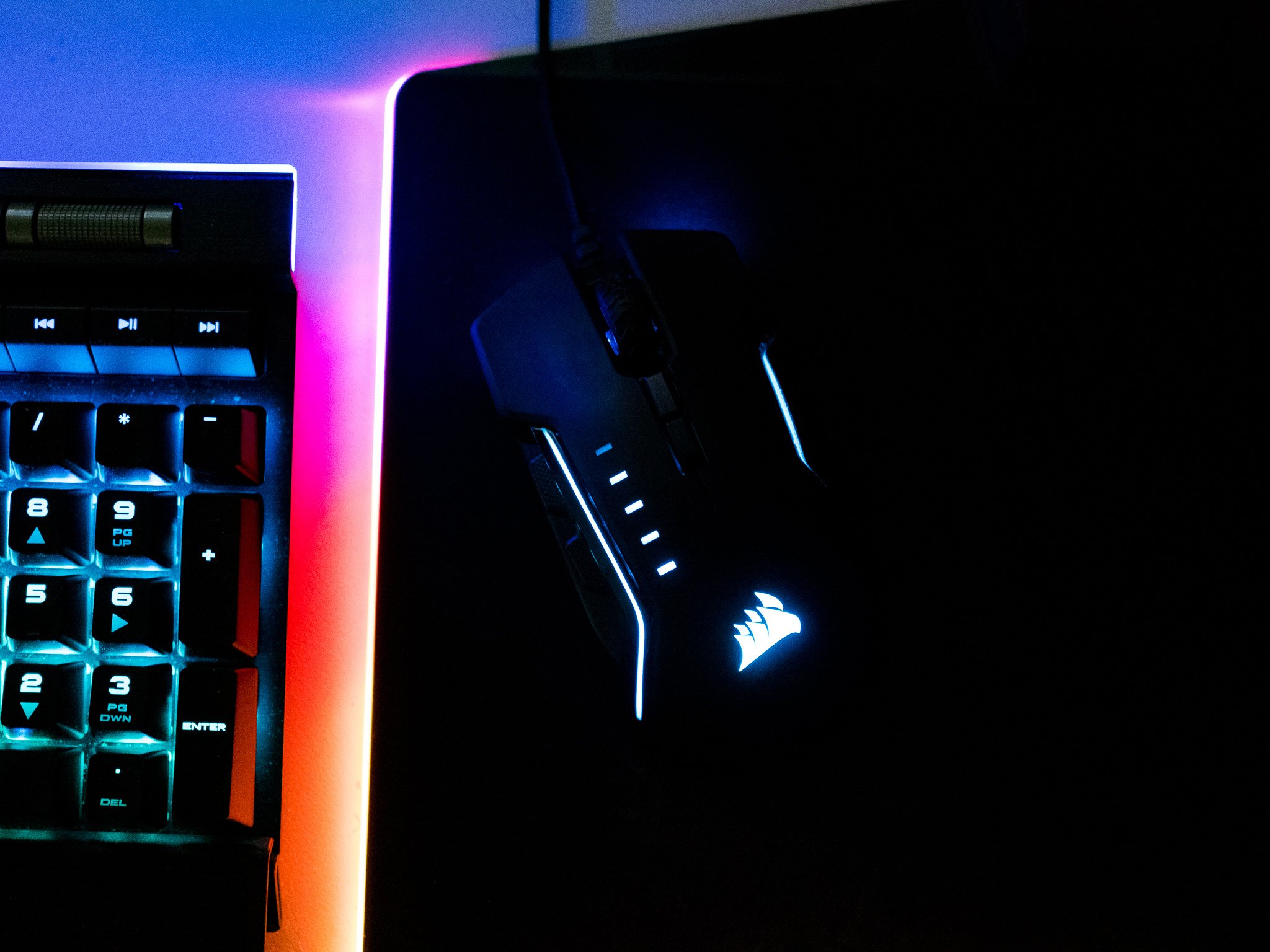
Logitech and Razer continue to dominate the gaming mice segment, but Corsair has steadily been rising up the ranks in the last three years. The Glaive made its debut back in 2017 with three-zone RGB LEDs and an interesting design, and Corsair is updating the model for 2019 with a new sensor and other tweaks, with a Pro moniker thrown in for good measure.
The Glaive RGB Pro doesn't differ all that much from the standard model, but there are a few key differences: it has a more contoured design that makes it more comfortable to use for extended gaming sessions and improved textures on the side grips.
This is one of the most comfortable mice I've ever used.
Corsair has reduced the width of the mouse from 2.9 inches to 2.7 inches, and that makes a lot of difference in day-to-day use. After three months of continuous usage, I can confidently say that the Glaive RGB Pro is one of the most comfortable mice I've used to date.
The mouse is designed for use with first-person shooter (FPS) and multiplayer online battle arena (MOBA) games, and customizability is a key selling point. The seven buttons are fully programmable, and you can assign macros or select a custom action to any button. There's onboard storage for three profiles, which means your lighting profiles, DPI settings, and macros are easily transferred over without additional software. And like most gaming mice on the market today, the Glaive RGB Pro has Omron switches that are rated for 50 million clicks.
There was an issue with the tactile response of the left-click button on the standard Glaive, but that has not been a problem for me on the Glaive RGB Pro. Both the left-click and right-click buttons have great tactile feedback, and the aluminum scroll wheel is large and coated with rubber for additional stability.
All the latest news, reviews, and guides for Windows and Xbox diehards.
A marquee feature of the Glaive RGB Pro is the customizable side grips. You get to choose from three different options, and they connect to the mouse magnetically. There's a thumb rest, a side panel that curves inward, and one that curves slightly outward.
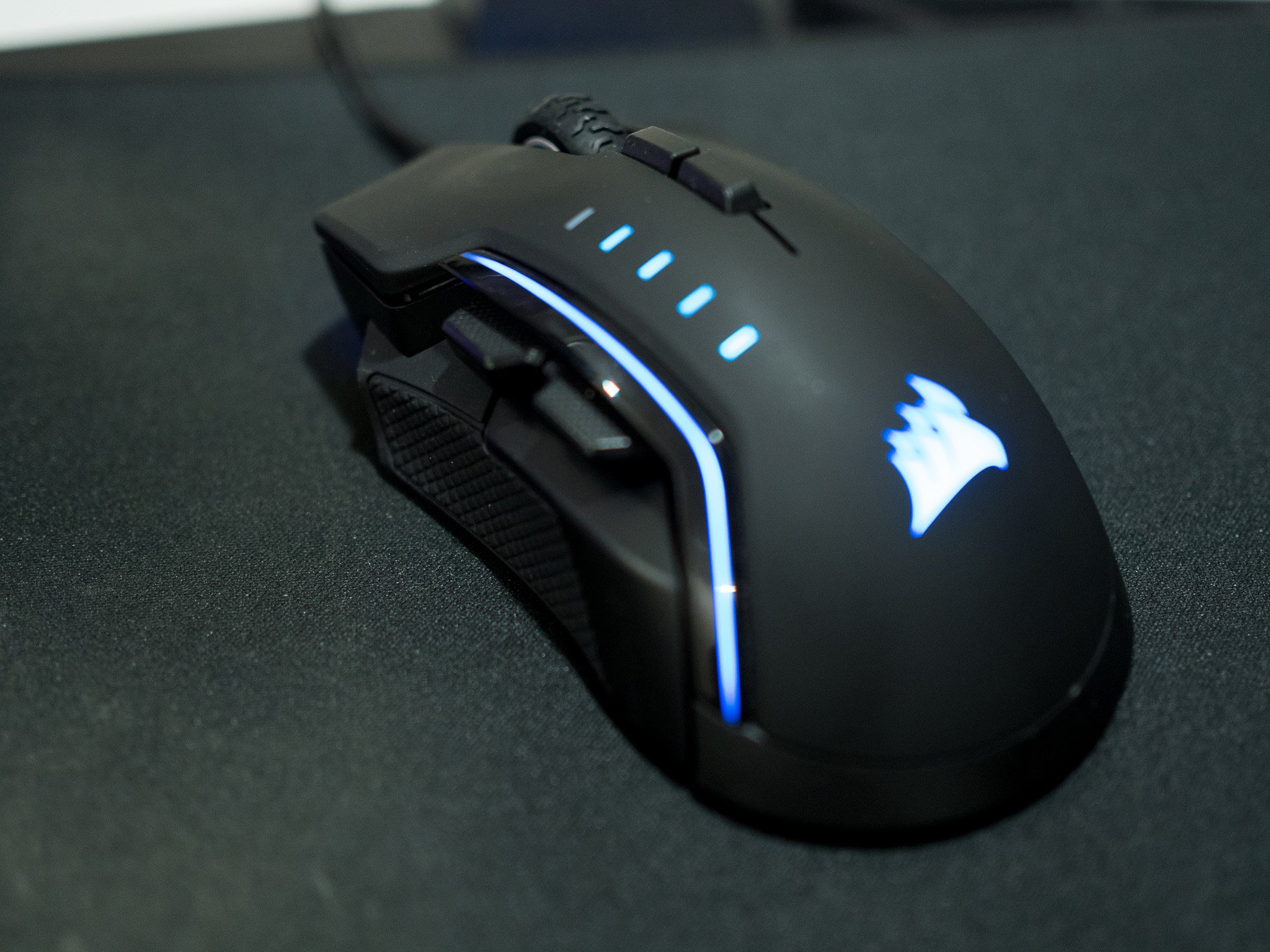
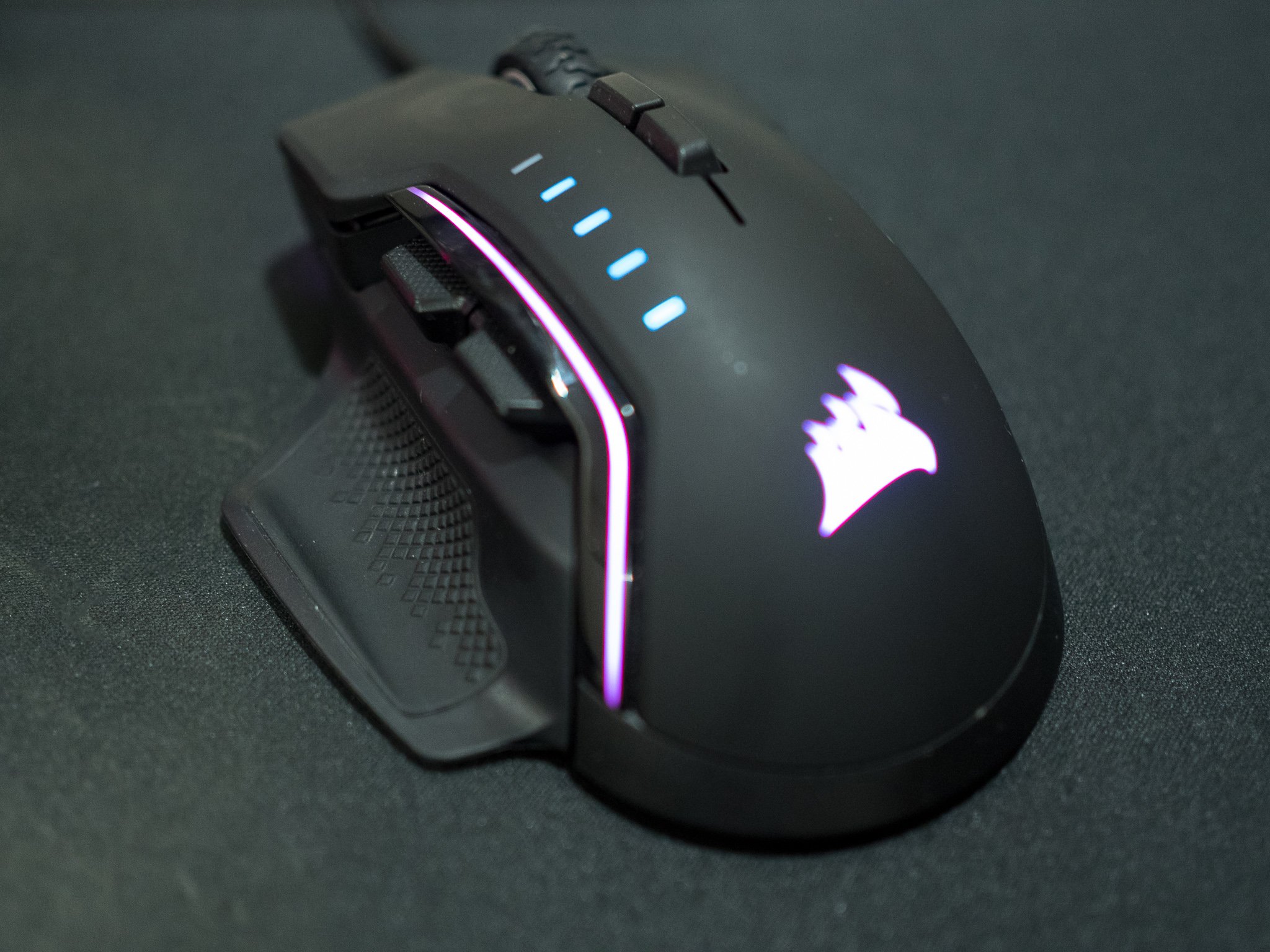
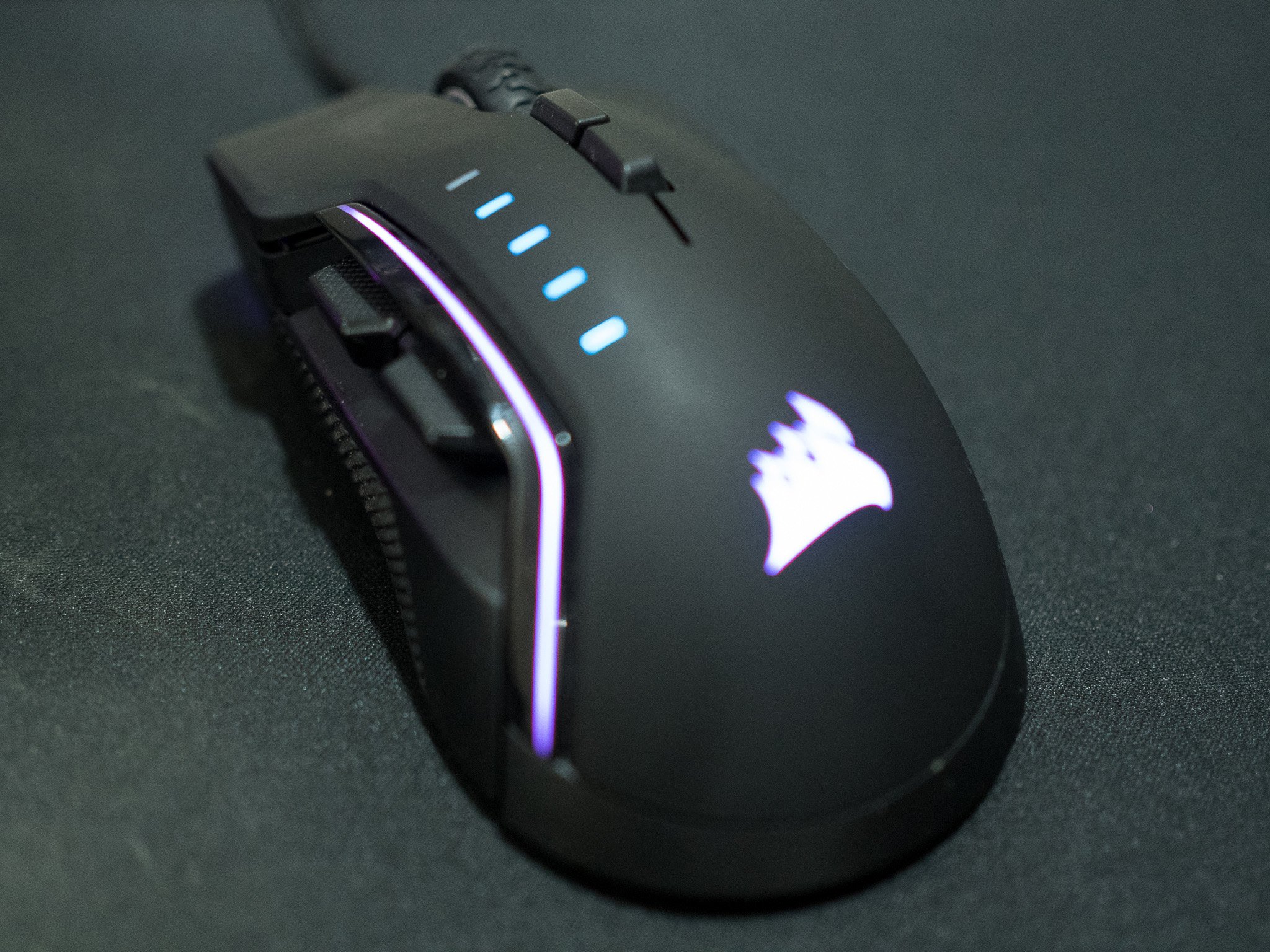
Powering the Glaive RGB Pro is the PixArt PMW3391 optical sensor that goes up to 18,000 DPI. The mouse has a five-stage DPI indicator with default levels at 800, 1,500, 3,000, 6,000 and 9,000. You can manually adjust the DPI setting with each level via Corsair's iCUE software. The higher DPI sensor is purely academic as you're not really going to notice the difference between a 16,000 DPI module and the 18,000 DPI sensor. That said, it is one of the best optical sensors on the market.
Another interesting feature on the Glaive RGB Pro is the three-zone RGB lighting. There's a lighting zone at the front, two ribbons on either side of the mouse, and one on the Corsair logo. RGB lighting can be customized using iCUE, and if you have other Corsair products, you get the option to sync lighting across all devices.
What you'll dislike about the Corsair Glaive RGB Pro
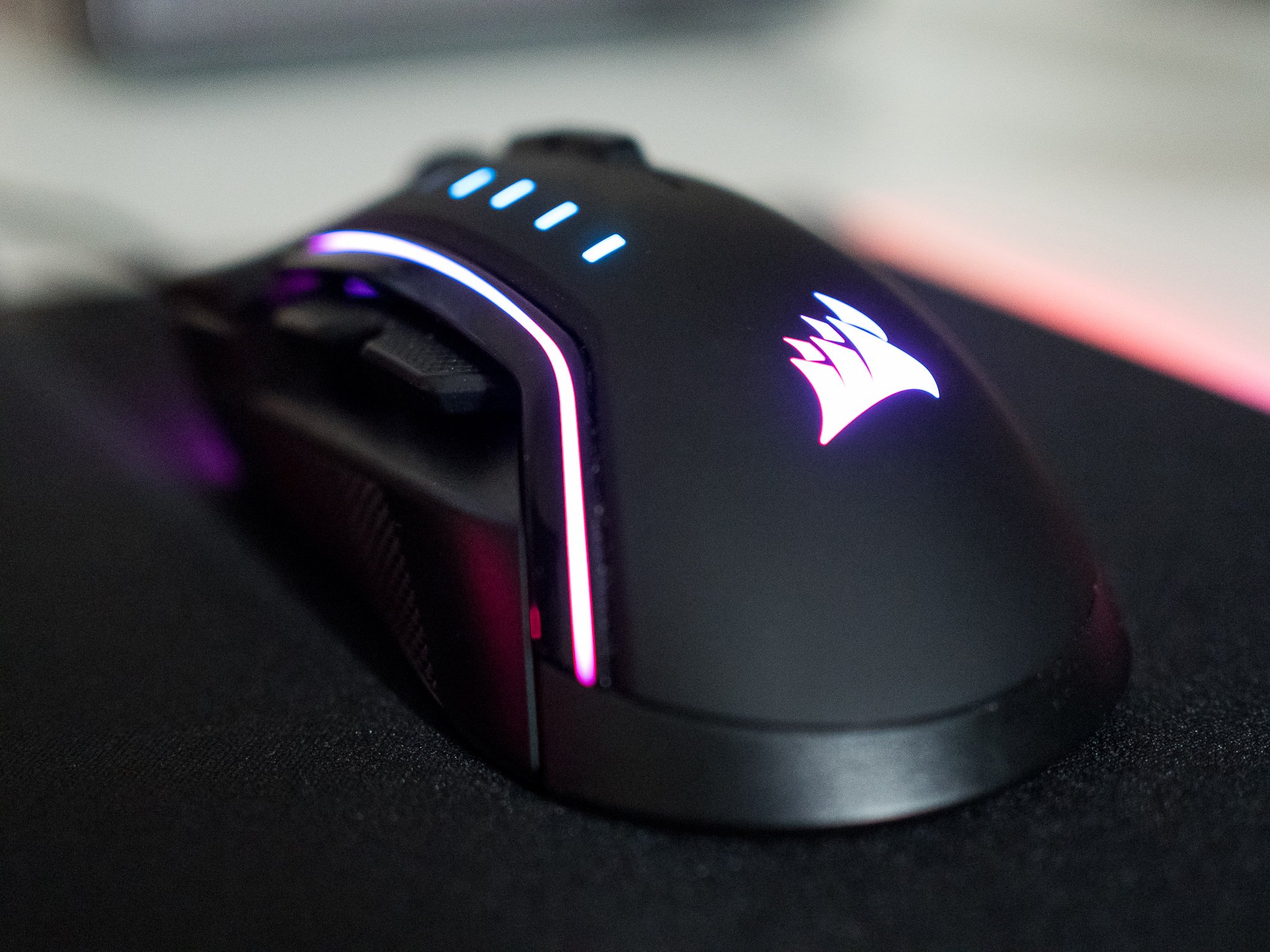
The standard Glaive has blue LEDs for the DPI indicator, but with the Glaive RGB Pro, Corsair added RGB LEDs as well. That's a welcome change, but what's not so great is the fact that there's no option to switch off the LEDs.
There's no way to switch off the DPI indicator lights, so you'll have to use a workaround.
Because of the sheer number of LED lights on the mouse, it gets uncomfortably warm under the DPI indicator, so much so that I went looking for a setting to disable the LEDs. While you can switch off the RGB LEDs for the three zones, there's no way to turn off the DPI indicator LEDs.
If you've got your gaming rig in your bedroom and don't want any LED lights active at night, your best option is to use a workaround to change the color of the LEDs to black so they're not illuminated. They're still on, but at least it won't be annoying. To do so, you'll have to go to iCUE, select the mouse settings, go to the DPI section, and use the color code #000000.
So should you buy the Corsair Glaive RGB Pro?

With the Gliave RGB Pro, Corsair fixed a lot of the issues that plagued the first-gen model while introducing enticing new features. The contoured design makes it a much more comfortable mouse, the buttons have better tactile feedback, and the RGB lighting makes it stand out.
It's annoying that you can't switch off the DPI indicator LEDs, but aside from that minor issue, the Glaive RGB Pro is a fantastic gaming mouse for 2019.
The Glaive RGB Pro is available for $70, or a $20 premium over the standard version with the 16,000 DPI sensor. That premium is fully justified when you consider the fact that the Glaive RGB Pro has a more ergonomic design with a contoured body and lighter frame, along with better RGB lighting and an 18,000 DPI sensor.

Ergonomic design paired with a terrific sensor.
The Glaive RGB Pro comes with a host of upgrades that make it one of the best gaming mice of 2019. It's comfortable for all-day use, the tactile feedback from the buttons is excellent, and the 18,000 DPI sensor is one of the best around.
Portable (and affordable) power accessories we love
Each and every one of these charging gadgets will keep your favorite gear and gadgets going for longer, and none of them costs more than $30.

VisionTek 8,000 mAh micro-USB power bank ($13 at Dell)
This compact dual-output powerbank can speedily recharge any and all your devices, thanks to a two-amp "fast charge feature," using its micro-USB out port. Its simple design includes an LED indicator, and it costs about as much as a single ticket to the movies.
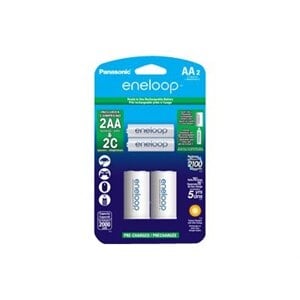
Panasonic eneloop AA batteries (From $13 at Dell)
Panasonic's rechargeable batteries are among the best available, and just a couple of them will keep your favorite remote, mice or other peripherals powered up when you need them. They're also eco. And the company's affordable charger fits and charges both AA and AAA batteries at the same time.
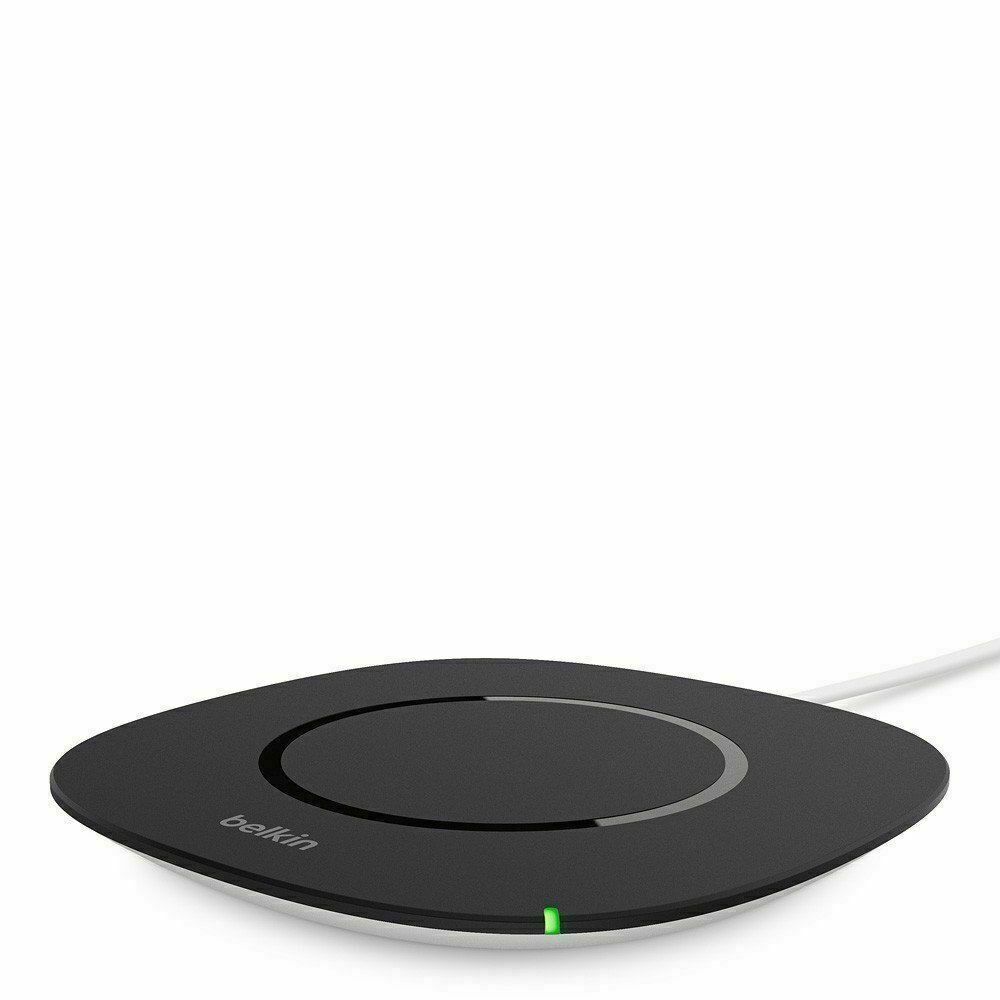
Belkin Qi Wireless Charging Pad ($30 at Dell)
This unobtrusive Qi wireless charging pad looks good (and kind of like a UFO …) and easily charges all your Qi-compatible device up to 5W. Its LED indicator lights up when you're charging. And it costs just $30.

Harish Jonnalagadda is a Senior Editor overseeing Asia for Android Central, Windows Central's sister site. When not reviewing phones, he's testing PC hardware, including video cards, motherboards, gaming accessories, and keyboards.

